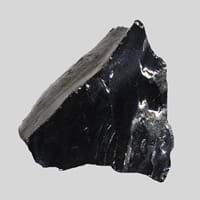Definition
Anthracite is a type of sedimentary rock which is hard and is variety of coal that has high luster
Chalk is a soft, white, powdery limestone consisting mainly of fossil shells of foraminifers
Origin
Pennsylvania, U.S.
Unknown
Discoverer
Unknown
Unknown
Etymology
From Greek anthrakites, from anthrax, anthrak meaning coal
From old English cealc chalk, lime, plaster; pebble, from Greek khalix small pebble, in English transferred to the opaque, white, soft limestone
Class
Metamorphic Rocks
Sedimentary Rocks
Sub-Class
Durable Rock, Soft Rock
Durable Rock, Soft Rock
Group
Not Applicable
Not Applicable
Other Categories
Coarse Grained Rock, Fine Grained Rock, Medium Grained Rock, Opaque Rock
Fine Grained Rock, Opaque Rock
Texture
Amorphous, Glassy
Clastic or Non-Clastic
Color
Black, Brown, Dark Brown, Grey, Light to Dark Grey
Grey, White, Yellow
Durability
Durable
Durable
Appearance
Veined or Pebbled
Soft
Interior Uses
Not Yet Used
Decorative Aggregates, Homes, Interior Decoration
Exterior Uses
Not Yet Used
As Building Stone, As Facing Stone, Paving Stone, Garden Decoration
Other Architectural Uses
Not Yet Used
Powder
Construction Industry
Cement Manufacture, for Road Aggregate, Making natural cement, Steel Production
As Dimension Stone, Cement Manufacture, Construction Aggregate, for Road Aggregate, Making natural cement, raw material for manufacture of quicklime and slaked lime, Source of calcium
Medical Industry
In Chemical and Pharmaceutical Industry, Manufacture of Aspirins
Not Yet Used
Antiquity Uses
Not Yet Used
Artifacts, Monuments, Sculpture, Small Figurines
Commercial Uses
Alumina Refineries, Electricity Generation, Liquid Fuel, Manufacture of Soap, Solvents, Dyes, Plastics and Fibres, Paper Industry
Alumina Refineries, Creating Artwork, Drawing on blackboards, Gymnasts, athletes and mountain climbers use for grip, In aquifers, Paper Industry, Production of Lime, Raw material for manufacture of quicklime, slaked lime, Soil Conditioner, Whiting, Whiting material in toothpaste, paint and paper
Types
Semi-anthracite and Meta-anthracite
Not Available
Features
Helps in production of Heat and Electricity, Used as fossil fuel
Clasts are smooth to touch, Is one of the oldest rock, Smooth to touch, Very fine grained rock
Archaeological Significance
Monuments
Not Yet Used
Used
Famous Monuments
Not Applicable
Data Not Available
Sculpture
Not Yet Used
Used
Famous Sculptures
Not Applicable
Data Not Available
Figurines
Not Yet Used
Used
Formation
Anthracite forms from the accumulation of plant debris in a swamp environment. When plant debris dies and falls into the swamp, the standing water of the swamp protects it from decay.
Chalk is formed from lime mud, which accumulates on the sea floor which is then transformed into rock by geological processes.
Mineral Content
Calcite, Clay, Clay Minerals
Calcite, Clay, Clay Minerals, Quartz, Sand
Compound Content
Carbon, Hydrogen, Nitrogen, Oxygen, Sulphur
Ca, NaCl, CaO
Types of Metamorphism
Burial Metamorphism, Contact Metamorphism, Regional Metamorphism
Not Applicable
Types of Weathering
Not Applicable
Biological Weathering, Chemical Weathering
Types of Erosion
Not Applicable
Chemical Erosion, Coastal Erosion, Water Erosion
Grain Size
Medium to Fine Coarse Grained
Very fine-grained
Fracture
Conchoidal
Not Available
Porosity
Less Porous
Highly Porous
Cleavage
Non-Existent
Non-Existent
Toughness
Not Available
1
Specific Gravity
1.1-1.4
2.3-2.4
Transparency
Opaque
Opaque
Density
1.25-2.5 g/cm3
2.49-2.50 g/cm3
Resistance
Heat Resistant, Water Resistant
Heat Resistant
Deposits in Eastern Continents
Asia
Bangladesh, Burma, Cambodia, China, India, Indonesia, Kazakhstan, Malaysia, Mongolia, Pakistan, Turkey, Vietnam
Brunei, India, Indonesia, Malaysia, Singapore, Thailand, Vietnam
Africa
Botswana, Kenya, Morocco, Mozambique, South Africa, Tanzania
Cameroon, Chad, Ghana, Kenya, Malawi, Sudan, Tanzania, Togo, Zambia, Zimbabwe
Europe
Belgium, Bulgaria, England, France, Germany, Greece, Hungary, Kosovo, Netherlands, Norway, Poland, Romania, Serbia, Slovakia, Slovenia, The Czech Republic, Ukraine, United Kingdom
England, France, Germany, Spain, United Kingdom
Others
Not Yet Found
Not Yet Found
Deposits in Western Continents
North America
Canada, Mexico, USA
Canada, USA
South America
Brazil, Chile, Colombia, Venezuela
Colombia
Deposits in Oceania Continent
Australia
New South Wales, Queensland, Victoria
Adelaide, New Zealand, Queensland, Tonga, Victoria, Yorke Peninsula
All about Anthracite and Chalk Properties
Know all about Anthracite and Chalk properties here. All properties of rocks are important as they define the type of rock and its application. Anthracite belongs to Metamorphic Rocks while Chalk belongs to Sedimentary Rocks.Texture of Anthracite is Amorphous, Glassy whereas that of Chalk is Clastic or Non-Clastic. Anthracite appears Veined or Pebbled and Chalk appears Soft. The luster of Anthracite is shiny while that of Chalk is dull. Anthracite is available in black, brown, dark brown, grey, light to dark grey colors whereas Chalk is available in grey, white, yellow colors. The commercial uses of Anthracite are alumina refineries, electricity generation, liquid fuel, manufacture of soap, solvents, dyes, plastics and fibres, paper industry and that of Chalk are alumina refineries, creating artwork, drawing on blackboards, gymnasts, athletes and mountain climbers use for grip, in aquifers, paper industry, production of lime, raw material for manufacture of quicklime, slaked lime, soil conditioner, whiting, whiting material in toothpaste, paint and paper.









